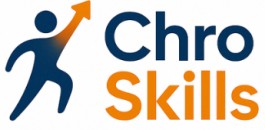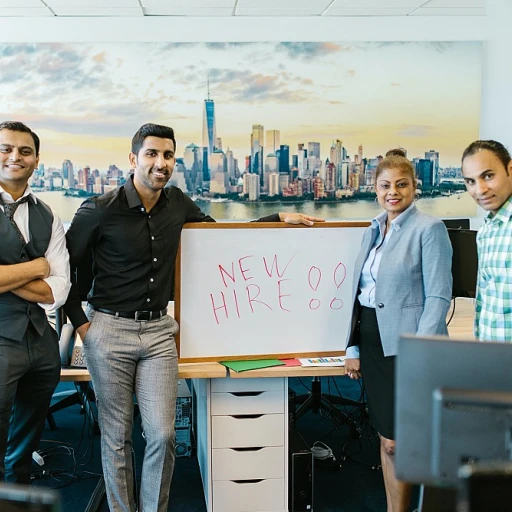
Understanding the Role of a Chief Human Resources Officer
Exploring the Responsibilities of a CHRO
A Chief Human Resources Officer (CHRO) plays a crucial role in any organization, acting as a cornerstone in shaping the company’s work environment. Their primary duties encompass strategizing and overseeing the HR department to align with broader organizational objectives. This alignment is essential as it ensures that the human resources policies and practices effectively support the organization's long-term strategy.
CHROs are pivotal in leadership development and have the responsibility to nurture team members’ leadership skills. By setting smart and achievable goals, they contribute significantly to the growth and betterment of the company. This involves continuously working on improving emotional intelligence among leaders to foster a cohesive and supportive workplace.
Measuring success and adjusting leadership approaches accordingly is another vital aspect of a CHRO’s role. Implementing specific goals helps in maintaining alignment with the organization’s strategy. Feedback mechanisms are essential, as they provide insights for refining leadership goals and enhancing decision-making processes.
The ability to adapt and maintain relevancy over time is vital for a CHRO. This requires developing a culture of continuous improvement where both leaders and team members strive to improve through effective goal setting. By doing so, CHROs help to cultivate a work environment that prioritizes development goals, smart leadership strategies, and salient skill improvements. For further insights into crafting such effective leadership approaches, consider exploring descriptive adjectives that exemplify effective leadership in HR.
Key Leadership Skills for CHROs
Essential Skills for Driving Leadership
In order for a Chief Human Resources Officer (CHRO) to effectively fulfill their role, mastering a combination of key leadership skills is essential. These skills not only enhance their ability to lead their team but also align with their organization’s strategic goals. As a foundation, CHROs must develop the ability to set SMART goals—specific, measurable, achievable, relevant, and time-bound—that can drive both personal and organizational growth.
Let’s delve into some of the critical leadership skills every CHRO should cultivate:
- Time Management: Managing time efficiently is crucial for CHROs to balance strategic planning with the daily operational demands of their role. Efficient time management alongside setting clear leadership goals ensures that CHROs make the most of their day to positively impact the work environment.
- Decision Making: A good leader is defined by their decision-making abilities. For CHROs, making informed and timely decisions can significantly affect organizational dynamics and team performance. This requires honing critical thinking and problem-solving skills, which are pivotal in navigating through complex human resources challenges.
- Emotional Intelligence: Understanding and managing one’s emotions, as well as those of others, is integral in fostering strong relationships within the team. Emotional intelligence helps leaders create an empathetic work environment that encourages open communication and feedback. It is an ongoing leadership development objective that can profoundly enhance interpersonal connections and team morale.
- Communication: Effective communication is the backbone of any successful leader. For CHROs, it is imperative to consistently convey the organizational mission, goals, and progress to team members, ensuring they are engaged and informed.
- Adaptability: The ability to adapt to changing circumstances enables CHROs to remain effective even when faced with unexpected challenges. Adaptable leaders are proactive in their approach, ready to pivot strategies and goals as required to better align with the evolving needs of the organization.
Incorporating these skills into daily leadership practices enables CHROs to achieve their development goals, ensuring that they are not only effective leaders but also pivotal contributors to their organization’s long-term success. For more in-depth insights on leadership training for HR leaders, explore essential topics that can support this transformative journey.
Aligning Leadership Goals with Organizational Strategy
Integrating Goals with Broader Business Objectives
Aligning leadership goals with organizational strategy is crucial for a Chief Human Resources Officer (CHRO) as it ensures that the goals are not only relevant but also contribute to the overall success of the organization. By aligning leadership goals with the company's strategic aims, CHROs can create cohesion between HR initiatives and broader business objectives, leading to more effective outcomes. To achieve this alignment, CHROs should begin with a thorough understanding of the company's vision, mission, and values. This foundation allows for setting achievable goals that resonate with the organizational culture and long-term vision. Moreover, effective goal setting involves the use of SMART goals, which are specific, measurable, attainable, relevant, and time-bound. SMART leadership goals provide clear direction and facilitate monitoring progress over time. One successful strategy is to involve team members in the goal-setting process, fostering an environment of collaboration and shared responsibility. This not only enhances team cohesion but also encourages employee engagement, as individuals feel their contributions directly impact strategic outcomes. Moreover, CHROs should seek continual feedback to refine their goals and adapt them as necessary, ensuring they remain aligned with both current needs and future business directions. Allocating time for regular reviews and adjustments is essential, as it provides opportunities for reflection and improvement. This approach helps in developing a proactive mindset, allowing leaders to anticipate challenges and identify growth opportunities before they arise. In coupling goal alignment with effective time management, CHROs can prioritize leadership development needs and identify areas for improvement. Decision-making capabilities improve as leaders become better equipped to set and pursue objectives that enhance the work environment and ultimately drive organizational success. By embedding leadership development and smart goal frameworks into the strategic planning, CHROs ensure their leadership path contributes constructively to the company's broader objectives. For more insights on effectively aligning leadership approaches with organizational practices, explore the role of coaching in business leadership.Developing Emotional Intelligence
Enhancing Emotional Awareness for Stronger Leadership
In the world of leadership, emotional intelligence stands as a pivotal factor for successful Chief Human Resources Officers (CHROs). It is not only about recognizing and understanding one's emotions but also involves developing the ability to perceive and influence the emotions of team members. This skill is integral in setting effective leadership goals as it impacts various aspects of team dynamics and team work environments. CHROs who demonstrate high emotional intelligence tend to build stronger relationships with their teams, facilitating a work environment that is conducive to growth and collaboration. A leader's ability to connect emotionally with their team helps in understanding individual needs and aspirations, thereby creating more relevant and achievable development goals. For CHROs aiming to improve their leadership impact, incorporating emotional intelligence into their goal-setting process becomes essential. By applying the SMART goals framework—Specific, Measurable, Achievable, Relevant, and Time-bound—CHROs can more effectively drive leadership development and enhance overall organizational performance. Moreover, it is crucial for leaders to receive and give constructive feedback. Feedback helps refine emotional intelligence and decision making. The process of continuous learning and adjustment based on feedback ensures that leadership goals remain aligned with both team aspirations and organizational strategy. Setting aside dedicated time for self-reflection and emotional growth not only empowers leaders but also influences their ability to foster an environment of continuous improvement among team members. Within three months, leaders can see significant improvements by actively working on these aspects, therefore enhancing their capability to manage teams efficiently and set long-term development goals for both themselves and their teams. In conclusion, for CHROs to excel and become true leaders within their organizations, focusing on emotional intelligence and incorporating it into their leadership style is imperative. This focus enables the creation of smart leadership goals that are impactful and lead to better team cohesion and success.Fostering a Culture of Continuous Improvement
Promoting an Environment of Continuous Growth
To successfully foster a culture of continuous improvement, Chief Human Resources Officers must create an environment where team members are encouraged to develop their skills and expand their capabilities. This involves nurturing a work atmosphere that prioritizes learning and growth, ultimately benefiting the organization in the long term.
Setting achievable goals plays a crucial role in promoting continuous improvement. By empowering leaders and employees to set SMART goals—specific, measurable, attainable, relevant, and time-bound—leadership can harness the full potential of their teams. SMART goal setting not only provides clarity and direction but also ensures that all team members are aligned towards common leadership goals.
Encouraging Effective Feedback Loops
Feedback is an essential component of continuous improvement. A CHRO should help establish regular feedback systems that allow employees to learn and adjust their behaviors or strategies in a timely manner. Providing constructive feedback not only aids in the development of individual skills but also drives team success and innovation.
Feedback mechanisms can be enhanced by incorporating emotional intelligence into communication, empowering leaders to deliver evaluations with empathy and understanding. The ability to provide nuanced feedback helps in building positive relationships with employees, contributing to a better work environment.
Investing in Leadership Development
The focus on developing team members also involves prioritizing leadership development initiatives that prepare future leaders for greater responsibilities. Establishing leadership development programs within the organization can help in nurturing existing talent and ensuring a pipeline of skilled leaders ready to take on new challenges.
These programs should emphasize essential leadership skills such as decision making, time management, and emotional intelligence, enabling team members to gradually assume roles that require complex decision-making capabilities.
Overall, fostering a culture of continuous improvement relies on the alignment of personal and organizational goals, leveraging structured feedback mechanisms, and investing in ongoing leader development. By maintaining a consistent focus on these aspects, CHROs can effectively guide their teams towards measurable success over the long term.
Measuring Success and Adjusting Leadership Goals
Evaluating Progress and Perfecting Leadership Aspirations
Setting smart goals is only the beginning; the true mark of effective leadership lies in evaluating progress and refining leadership aspirations. As any proficient leader will attest, continuous self-assessment and adaptation are pivotal. Here are some practical strategies:- Consistent Feedback and Reflection: Regularly seek feedback from team members and peers. This feedback will be pivotal in fine-tuning approaches and fostering better relationships within the work environment. It is a collaborative way to improve leadership development and ensure the goals remain relevant and achievable.
- Measurable Benchmarks: Establish specific, measurable benchmarks within the leadership goals. This aligns with the smart goal framework where objectives are time-bound and achievable. Such clarity helps in tracking progress and adjusting strategies where necessary.
- Periodic Goal Review: Dedicate time regularly—perhaps every three months—to review leadership goals. Assess what has been accomplished, what remains to be addressed, and how current efforts align with the long-term vision and the organizational strategy.
- Develop Emotional Intelligence: Harnessing emotional intelligence allows leaders to better understand team dynamics and the individual aspirations of team members. This skill aids in creating a supportive atmosphere and improving team productivity, thus aligning leadership goals with personal development paths.
- Adaptation to Change: The dynamic nature of organizational strategies necessitates leaders to be flexible. Being able to pivot and adapt leadership goals helps in meeting the changing demands of the organization and the team. This involves effective decision making tailored to the evolving landscape.













